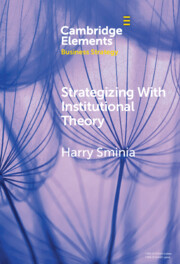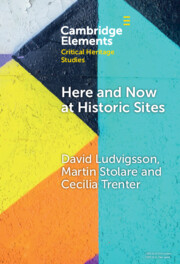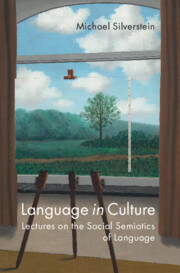68 results
Paper Steaks: Live Cattle Futures Markets and the Financial Revolution of 1964
-
- Journal:
- Enterprise & Society , First View
- Published online by Cambridge University Press:
- 31 May 2024, pp. 1-32
-
- Article
-
- You have access
- Open access
- HTML
- Export citation

Strategizing With Institutional Theory
-
- Published online:
- 21 May 2024
- Print publication:
- 13 June 2024
-
- Element
- Export citation

Here and Now at Historic Sites
- Pupils and Guides Experiencing Heritage
-
- Published online:
- 02 May 2024
- Print publication:
- 23 May 2024
-
- Element
-
- You have access
- Open access
- HTML
- Export citation
Introduction
-
- Book:
- Before the Word Was Queer
- Published online:
- 14 March 2024
- Print publication:
- 21 March 2024, pp 1-29
-
- Chapter
- Export citation
Chapter 10 - Nietzsche and Wagner: The Logic of Contradiction
- from II - People
-
-
- Book:
- Wagner in Context
- Published online:
- 14 March 2024
- Print publication:
- 14 March 2024, pp 104-112
-
- Chapter
- Export citation
5 - Consenting to International Law in Five Moves
- from Part I - Notions and Roles of Consent
-
-
- Book:
- Consenting to International Law
- Published online:
- 23 November 2023
- Print publication:
- 07 December 2023, pp 117-134
-
- Chapter
- Export citation

Translation as Creative–Critical Practice
-
- Published online:
- 29 November 2023
- Print publication:
- 21 December 2023
-
- Element
- Export citation
The time of money in finance and US society
-
- Journal:
- Finance and Society / Volume 4 / Issue 1 / 2018
- Published online by Cambridge University Press:
- 09 November 2023, pp. 15-25
-
- Article
-
- You have access
- Open access
- Export citation
Why performativity limits credit rating reform
-
- Journal:
- Finance and Society / Volume 5 / Issue 1 / 2019
- Published online by Cambridge University Press:
- 09 November 2023, pp. 20-41
-
- Article
-
- You have access
- Open access
- Export citation
Becoming a humanitarian state: A performative analysis of ‘status-seeking’ as statecraft in world politics
-
- Journal:
- Review of International Studies / Volume 50 / Issue 4 / July 2024
- Published online by Cambridge University Press:
- 06 November 2023, pp. 700-719
- Print publication:
- July 2024
-
- Article
-
- You have access
- Open access
- HTML
- Export citation
9 - Constructing Markets
-
- Book:
- Pricing the Priceless
- Published online:
- 19 October 2023
- Print publication:
- 02 November 2023, pp 200-223
-
- Chapter
- Export citation
12 - Social and Cultural Politics of Everyday Resistance and Empowerment
- from Part Three - Resistances and Intersections
-
-
- Book:
- The Cambridge Handbook for the Anthropology of Gender and Sexuality
- Published online:
- 29 September 2023
- Print publication:
- 19 October 2023, pp 313-335
-
- Chapter
- Export citation
10 - Language, Gender and Sexuality, and Performativity
- from Part Two - Knowledges and Domains
-
-
- Book:
- The Cambridge Handbook for the Anthropology of Gender and Sexuality
- Published online:
- 29 September 2023
- Print publication:
- 19 October 2023, pp 260-282
-
- Chapter
- Export citation
7 - Future Work
- from Part II - Re-orienting Critique in Organization Studies? Exploring Jointly Time and Politics
-
-
- Book:
- Organization as Time
- Published online:
- 22 June 2023
- Print publication:
- 06 July 2023, pp 136-155
-
- Chapter
- Export citation
Economic analyses of repugnant market transactions: a modest typology
-
- Journal:
- Journal of Institutional Economics / Volume 19 / Issue 6 / December 2023
- Published online by Cambridge University Press:
- 03 May 2023, pp. 930-943
-
- Article
-
- You have access
- Open access
- HTML
- Export citation
Chapter 14 - Alchemical Narratives
- from III - Science, Alchemy, Nature
-
-
- Book:
- A History of the Surrealist Novel
- Published online:
- 02 February 2023
- Print publication:
- 16 February 2023, pp 242-258
-
- Chapter
- Export citation
21 - Policy Relevance and Neutrality
- from Part IV - Processes
-
-
- Book:
- A Critical Assessment of the Intergovernmental Panel on Climate Change
- Published online:
- 08 December 2022
- Print publication:
- 22 December 2022, pp 197-206
-
- Chapter
-
- You have access
- Open access
- HTML
- Export citation

Language in Culture
- Lectures on the Social Semiotics of Language
-
- Published online:
- 22 December 2022
- Print publication:
- 22 December 2022
-
- Textbook
- Export citation
Introduction
-
- Book:
- Strolling Players of Empire
- Published online:
- 11 November 2022
- Print publication:
- 01 December 2022, pp 4-44
-
- Chapter
- Export citation
The Operatic Roots of Performativity: Bodies Decontextualised in Butler, Brecht and Busoni
-
- Journal:
- Cambridge Opera Journal / Volume 34 / Issue 3 / November 2022
- Published online by Cambridge University Press:
- 09 December 2022, pp. 309-337
- Print publication:
- November 2022
-
- Article
-
- You have access
- Open access
- HTML
- Export citation

